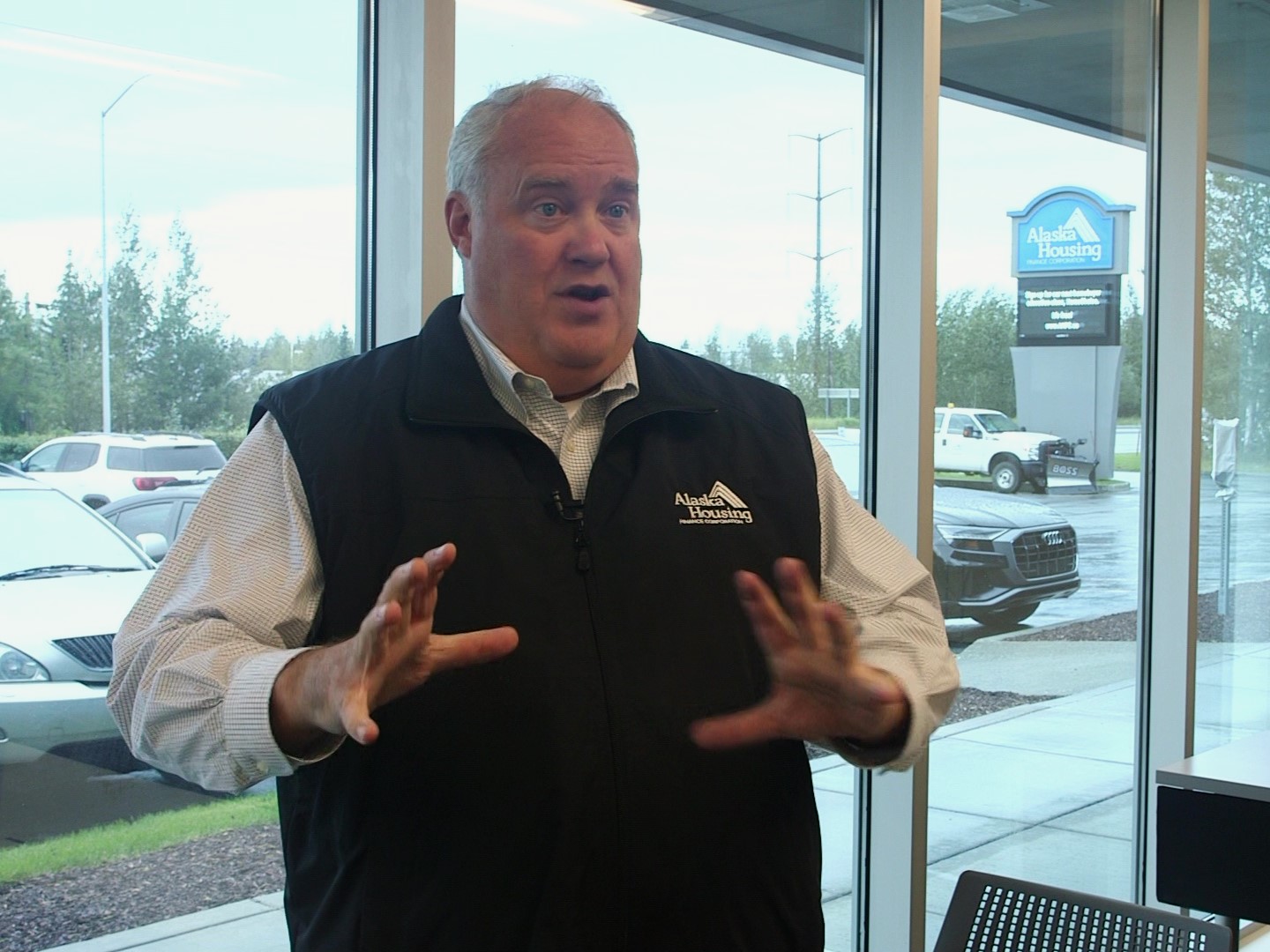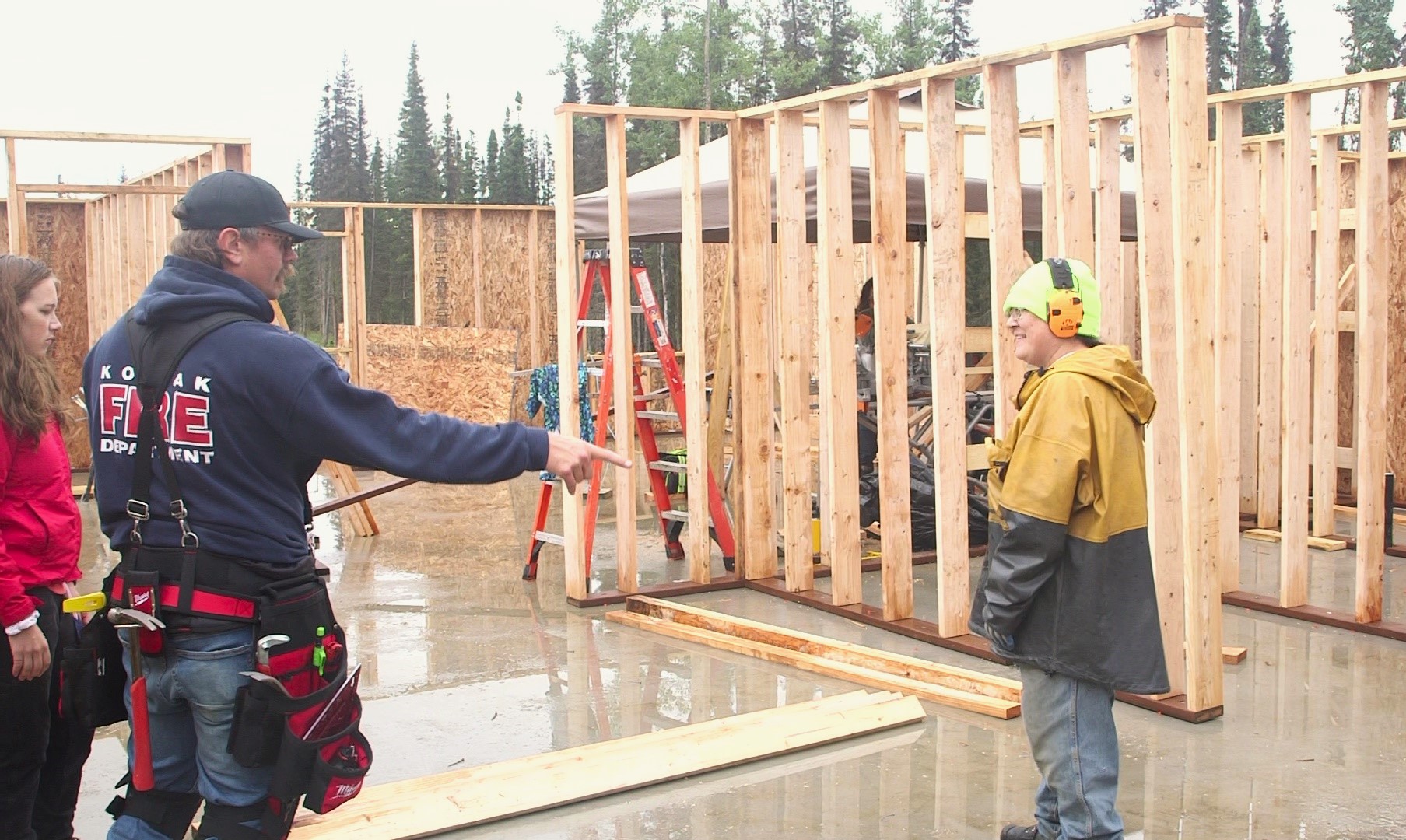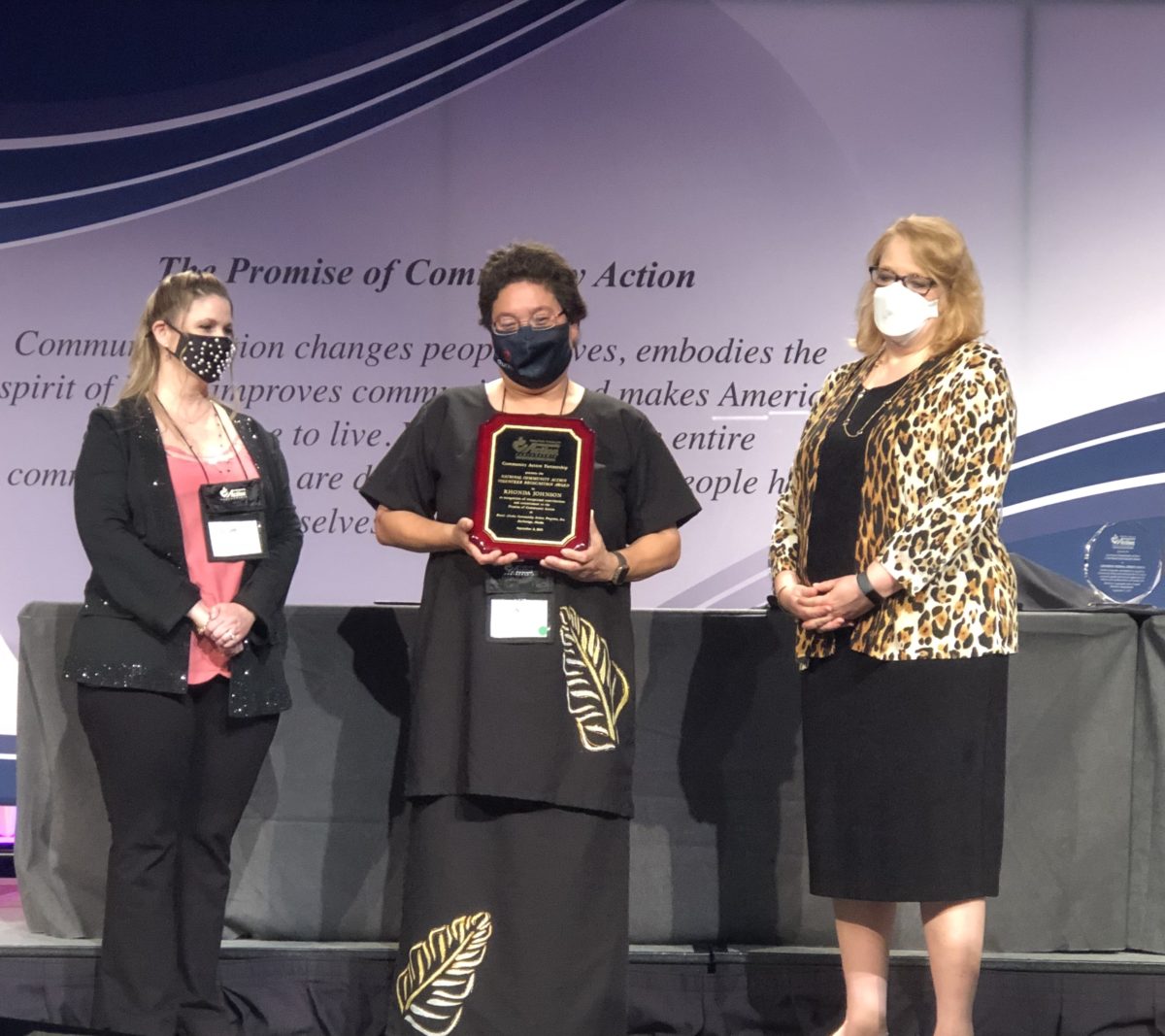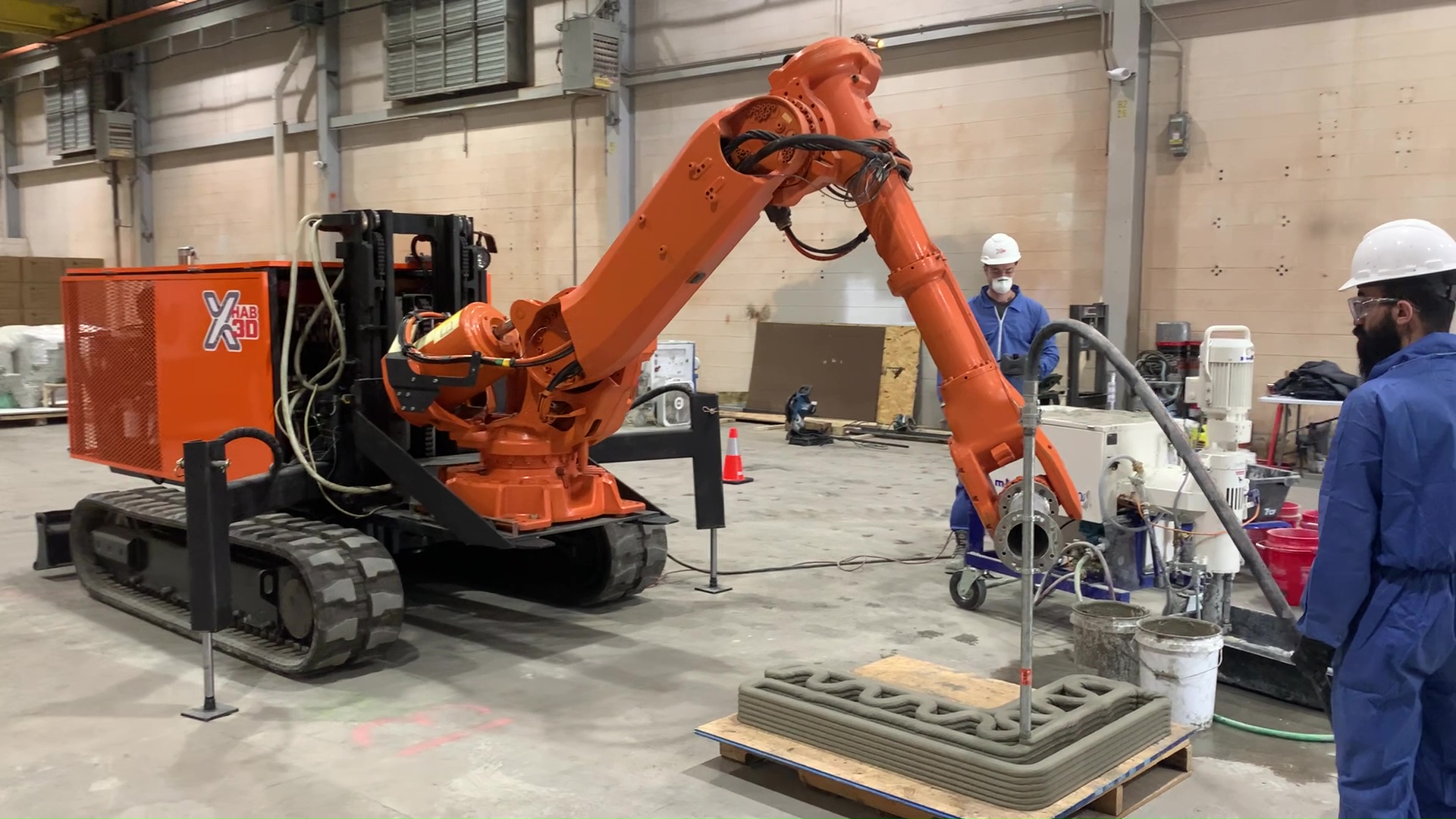Across Alaska, it’s a challenge to find affordable housing. Homebuilding and vacancy rates are down, while rent, mortgage rates and home prices are up.
The lack of affordable housing drives people into overcrowded homes, homelessness and out of state. Some officials have begun referring to it as a housing crisis.
Erik Peterson, 32, was born and raised in Anchorage. He lived abroad in Japan for four years and moved back home in April, into the house he grew up in – with his parents.

“I don’t have to pay rent, which is amazing,” he said. “Because the rent is out of control.”
He said he has a good paying job and could buy a modest place in town for himself and his French bulldog. But he doesn’t think he’ll stay in Anchorage long-term. He said in Japan, he rented a great apartment – for $400 a month.
“And then I come back to Anchorage, Alaska, and they’re like, ‘We want $1,400 a month’ for like, some, you know, 1980s-never-remodeled special,” Peterson said. “And I’m like, I’m just – I’m not gonna pay that. I don’t think anybody should have to. And I just think that the average rental prices of any form of housing in Anchorage, as well as the purchasing price of anything, is completely out of control.”
According to state economists, the average home in Anchorage cost about $469,000 last year. That’s up 20% in just a few years.
The cost of rent has also been climbing in recent years across much of the state, and in Anchorage especially. According to state economists, the average rent for a two-bedroom apartment in Alaska rose 7% in the last year, the largest increase since 2011.
Alaska Housing Finance Corp. CEO Bryan Butcher said the cost of land, labor, materials and transportation have all gone up in most communities.

“We’ve gotten to a situation where now even building market homes, developers can’t afford to build it and then sell it at what they built it for,” he said. “That’s making housing prices go up.”
Plus, the cost of borrowing to buy a home has climbed to the highest rates in decades. AHFC is a special agency that can tap into capital markets regular lenders can’t. That way, it can offer a lot of Alaska homebuyers mortgages at better-than-market rates.
“As an example, a year or two ago, 21% of the houses that folks were buying in Alaska were AHFC loans,” Butcher said. “This year, it’s 34%. So we’re seeing a lot more activity.”
In Soldotna, the nonprofit RurAL Cap is overseeing work to build nine homes. The construction workers cutting lumber and nail gunning two-by-fours together are also the owners.
Nine local families are working together to build nine homes through the nonprofit’s Mutual Self-Help Housing program. The program connects lower income families with low-interest and subsidized mortgages from the federal government.
Each family commits to work 36 hours a week on the houses. Volunteers can contribute, too. Their sweat equity covers the down payments.
Rhonda Johnson learned about the program in 2009. She was working at Wal-Mart at the time, and renting an apartment for herself and four kids.

“There’s no way I could’ve bought a home,” she said. “Who has $30,000 to put down on the home? I don’t. It’s the sweat equity, building your home, building among friends.”
It took about seven years before Johnson qualified, made it up the waitlist and finished her home.
“And then I had friends and builds after mine,” she said. “And I just helped build, build, build and I just love to volunteer.”
Within a few years, she logged thousands of volunteer hours on 45 homes. She won a national volunteer award in 2021. Now, she works for RurAL Cap on the program.

She said it’s fulfilling work.
“Just to move in and they can say it’s their own home,” she said. “‘I built it with my hands.’”
RurAL Cap’s program has helped thousands of people since it started in 1971.
But there is a new building technology on the horizon that could dramatically lower the cost of market-rate housing: 3D concrete printing.
Next year, Nome will be the testing ground for a robotic system to lay the foundation, walls and roof of a home. The city and its partners are getting a federal grant to build demonstration homes to test the feasibility and economics.

Barring disruptive tech breakthroughs, Alaskans like Erik Peterson are advocating for relaxing the rules that govern what can and can’t be built as a more immediate path toward affordable housing.
“So many of Anchorage’s problems would be alleviated with cheaper housing,” Peterson told the Anchorage Assembly in July.
Jeremy Hsieh covers Anchorage with an emphasis on housing, homelessness, infrastructure and development. Reach him atjhsieh@alaskapublic.orgor 907-550-8428. Read more about Jeremyhere.





